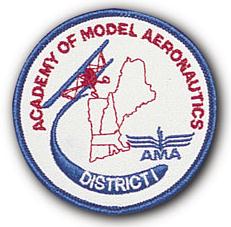3. What AMA and FAA recreational RC flying safety rules should a new member understand when flying at FRIA sites and non-FRIA sites?
It's crucial for all recreational RC pilots in the USA to understand and comply with both the FAA regulations and the AMA Safety Code to ensure safe and responsible flying practices as well as positive relationships with Gov. Agencies. Always check for the latest updates available from AMA and FAA: AMA Safety Programming
As of May 4, 2025, here's a breakdown of the AMA and FAA recreational RC flying safety rules at FRIA (FAA-Recognized Identification Area) sites and non-FRIA sites:
Key Concepts:
- FAA Recreational Flyer Requirements: These are the fundamental rules all recreational RC pilots must follow, regardless of where they fly.
- AMA Safety Code: As an FAA-recognized Community Based Organization (CBO), following the AMA Safety Code is a way for recreational flyers to meet one of the FAA's requirements.
- Remote ID: Since September 16, 2023, most RC aircraft weighing over 250 grams must broadcast Remote ID information unless flown within a FRIA.
- FRIA: A defined geographic area where RC aircraft can be flown without broadcasting Remote ID. Only FAA-recognized CBOs (like the AMA) and educational institutions can apply for FRIAs.
FAA Recreational RC Flying Safety Rules (Applicable at Both FRIA and Non-FRIA Sites):
- Fly only for recreational purposes.
- Follow AMA safety guidelines/handbook of an FAA-recognized CBO (like the AMA).
- Keep your aircraft within visual line of sight (VLOS). If using a visual observer, they must be co-located and in direct communication with you.
- Give way to and do not interfere with any manned aircraft.
- Fly at or below FAA-authorized altitudes in controlled airspace only with prior FAA authorization (LAANC or Drone Zone).
- Fly at or below 400 feet in Class G (uncontrolled) airspace.
- Comply with all airspace restrictions.
- Pass the FAA TRUST Test which is less of test and more of a lesson on safe flying (no studying is required). Print the the Trust certificate to carry with you.
- Acquire an FAA Registration number to mark on all your aircraft that weighs more than 0.55 pounds (250 grams) at FAADRONEZONE.FAA.GOV. Carry proof of registration certificate.
- Do not operate your aircraft in a manner that endangers the safety of the national airspace system.
AMA Safety Code (Followed at Both FRIA and Non-FRIA Sites):
The AMA Safety Code provides more specific guidelines that align with and often exceed basic FAA requirements. Key aspects include:
- Pre-Flight Checks: Thoroughly inspect your aircraft before each flight.
- Safe Operating Distances: Maintain safe distances from people, buildings, and other aircraft.
- Alcohol and Drugs: Do not fly under the influence.
- Flying Site Rules: Abide by any additional rules established by the local flying club or site.
- Beginner Guidance: Novice pilots should seek guidance from experienced flyers.
- Emergency Procedures: Be aware of emergency procedures.
Specific Rules at FRIA Sites:
- Exemption from Remote ID: The primary benefit of flying at an AMA-established FRIA is that RC aircraft without Remote ID can be flown there.
- Operation within FRIA Boundaries: Both the pilot and the aircraft must remain within the defined geographical boundaries of the FRIA throughout the flight.
- Visual Line of Sight: The pilot must maintain VLOS with the aircraft at all times within the FRIA.
- AMA Membership Often Required: Many AMA clubs that have FRIAs require AMA membership to fly at their field.
- Following AMA Safety Code and Club Rules: Operation within a FRIA still requires adherence to the AMA Safety Code and any specific rules of the club operating the FRIA.
Specific Rules at Non-FRIA Sites:
- Remote ID Requirement: If you are flying an RC aircraft weighing over 250 grams at a non-FRIA site, it must broadcast Remote ID information.
- This can be done through:
-
- Standard Remote ID: The aircraft has built-in Remote ID capability.
- Broadcast Module: An add-on module that broadcasts the required information.
- FAA Recreational Flyer Requirements Fully Apply: All the standard FAA recreational flying rules listed above must be followed.
- Following AMA Safety Code (Recommended): Even if not flying at an AMA field, following the AMA Safety Code is a recognized way to comply with the FAA's requirement to adhere to CBO safety guidelines.
In summary:
- Everywhere: You must follow the basic FAA Recreational Flyer requirements and it's highly recommended to adhere to the AMA Safety Code.
- FRIA Sites: The key difference is the exemption from the Remote ID broadcast requirement for aircraft flown within the FRIA boundaries. However, you must still be an AMA member at many FRIA sites and follow AMA and club rules.
- Non-FRIA Sites: You must comply with the FAA's Remote ID requirement if your aircraft weighs over 250 grams.


